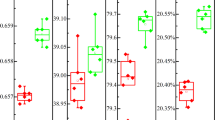Abstract
Light-induced degradation (LID) is a major concern in solar cells as it can significantly affect the long-term stability, and this issue has been highly observed in modules of silicon substrates doped with boron during the Czochralski (Cz) process. In addition to LID, major performance degradation has been observed at elevated temperature conditions in case of Cz silicon solar cells as well as mass produced multi-crystalline PERC solar cells which use dielectrically passivated surfaces. Increasing the efficiency of solar cells has proved to be a challenging task, and hence further reduction in degradation should be controlled and mitigated for better performance of cells. This review paper helps to understand several causes behind LeTID like excess carrier concentration, temperature and its effects on PERC solar cells. Few possible mitigation techniques like fast firing and laser annealing which are practiced by Tier 1 Module manufacturers are discussed at the end.
Access this chapter
Tax calculation will be finalised at checkout
Purchases are for personal use only
Similar content being viewed by others
References
https://www.pv-tech.org/news/acwa-power-wins-saudi-300mw-solar-project
F. Fertg, F. Kersten, K. Petter, M. Bartzsch, F. Stenzel, A. Mette, B. Kloter, J.W. Muller, Light and elevated temperature induced degradation of multicrystalline silicon solar cells and modules. Hanwha Q CELLS GmbH, Bitterfeld-Wolfen, Germany
C.E. Chan, D.N. Payne, B.J. Hallam, M.D. Abbott, T.H. Fung, A.M. Wenham, B.S. Tjahjono, S.R. Wenham, Rapid stabilization of high-performance multicrystalline P-type Silicon PERC cells
F. Kersten, P. Engelharta, H.-C. Ploigta, A. Stekolnikova, T. Lindnera, F. Stenzela, M. Bartzscha, A. Szpetha, K. Pettera, J. Heitmannb, J.W. Mullera, A new mc-Si degradation effect called LeTID
https://www.pv-tech.org/…/light-induced-degradation-newly-addressed-predicting-lon
H.C. Sio, H. Wang, Q. Wang, C. Sun, W. Chen, H. **, D. Macdonald, Light and elevated temperature induced degradation in p-type and n-type cast-grown multicrystalline and mono-like silicon, vol. 182, pp. 98–104, 1 August 2018
T. Niewelt, F. Schindler, W. Kwapil, R. Eberle, J. Schön, M.C. Schubert, Understanding the lightinduced degradation at elevated temperatures: Similarities between multicrystalline and floatzone p‐type silicon. In: Progress Photovoltaics: Research Applications 26, 533–542 (2018)
F. Kersten, J. Heitmannb, J.W. Müllera, Influence of Al2O3 and SiNx passivation layers on LeTID
C. Vargas, K. Kim, G. Coletti, D. Payne, C. Chan, S. Wenham, Z. Hameiri, Carrier-induced degradation in multicrystalline silicon: dependence on the silicon nitride passivation layer and hydrogen released during firing
M.A. Jensen, A.E. Morishige, J. Hofstetter, D.B. Needleman, T. Buonassisi, Evolution of LeTID defects in p-Type multicrystalline silicon during degradation and regeneration
D. Bredemeier, D.C. Walter, T. Pernau, O. Romer, J. Schmidt, Production compatible remedy against LeTID in high-performance multicrystalline silicon solar cells
Author information
Authors and Affiliations
Corresponding author
Editor information
Editors and Affiliations
Rights and permissions
Copyright information
© 2020 Springer Nature Singapore Pte Ltd.
About this paper
Cite this paper
Joshi, A., Iqbal, H. (2020). Impact of Light- and Elevated Temperature-Induced Degradation on PERC Solar Cells. In: Jain, V., Kumar, V., Verma, A. (eds) Advances in Solar Power Generation and Energy Harvesting. Springer Proceedings in Energy. Springer, Singapore. https://doi.org/10.1007/978-981-15-3635-9_7
Download citation
DOI: https://doi.org/10.1007/978-981-15-3635-9_7
Published:
Publisher Name: Springer, Singapore
Print ISBN: 978-981-15-3634-2
Online ISBN: 978-981-15-3635-9
eBook Packages: EnergyEnergy (R0)




